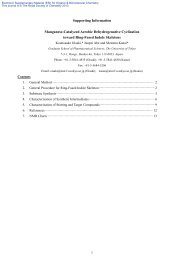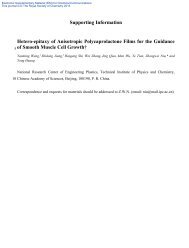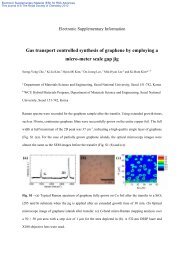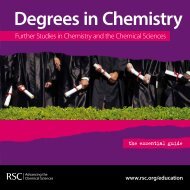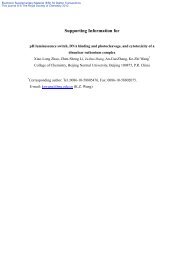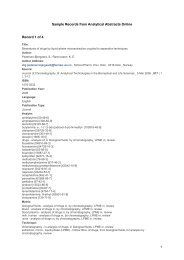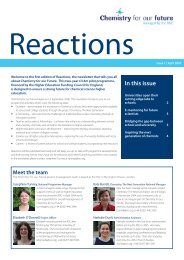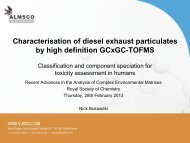Atom and molecule: upper secondary school French students ...
Atom and molecule: upper secondary school French students ...
Atom and molecule: upper secondary school French students ...
Create successful ePaper yourself
Turn your PDF publications into a flip-book with our unique Google optimized e-Paper software.
A. Cokelez <strong>and</strong> A. Dumon 124<br />
Figure 2. Examples of the student-drawn diagrams of an atom<br />
Solar system model Confusion Group of atoms<br />
<strong>Atom</strong> - <strong>molecule</strong><br />
Composition atom model<br />
Ball model<br />
Electron cloud model<br />
In order to identify the characteristics of the model that were assimilated, as well as the<br />
misconceptions, a certain number of keywords have been picked from the written<br />
descriptions. They are shown in Table 1 (see Appendix) <strong>and</strong> they lead to the definitions of six<br />
levels of description:<br />
L.0: Erroneous <strong>and</strong> no answer.<br />
L.1: An atom composed of a nucleus <strong>and</strong> an electron suite (or nucleus <strong>and</strong> electrons).<br />
L.2: A neutral atom composed of a positive nucleus <strong>and</strong> an electron suite.<br />
L.3: An atom composed of a nucleus that contains protons (Z) <strong>and</strong> neutrons, <strong>and</strong> an<br />
electron suite (or negative electrons).<br />
L.4: An atom is composed of a nucleus that contains (Z) positive protons <strong>and</strong> an electron<br />
suite that contains (Z) negative electrons. The number of positive charges equals the number<br />
of negative charges. [For oxygen: 8 protons <strong>and</strong> 8 electrons].<br />
L.5: An atom is composed of Z protons, A-Z neutrons <strong>and</strong> Z electrons.<br />
L.6: An atom is composed of a nucleus that contains Z protons <strong>and</strong> A-Z neutrons, <strong>and</strong> of<br />
an electron suite (or circling electrons) that contain Z electrons (or Z negative electrons).<br />
Remarks (in italics above) concern grade 11 <strong>and</strong> 12 curricula. We can consider level 1 as<br />
the minimum level judged acceptable for <strong>students</strong> at the end of grade 9 (Lower Secondary),<br />
level 2 is the curricular level of description in that class, level 3 is the minimum level judged<br />
acceptable in grade 10 (Upper Secondary) <strong>and</strong> level 6 corresponds to the curricular level of<br />
description in that class.<br />
Analysis of results<br />
We recognise that a model can be represented in different ways, with the representations<br />
varying according to the aspects of the concept to be illustrated. From our questionnaire it is<br />
not possible to know the repertoire of representations that individuals may have. We can only<br />
Chemistry Education Research <strong>and</strong> Practice, 2005, 6 (3), 119-135<br />
This journal is © The Royal Society of Chemistry




